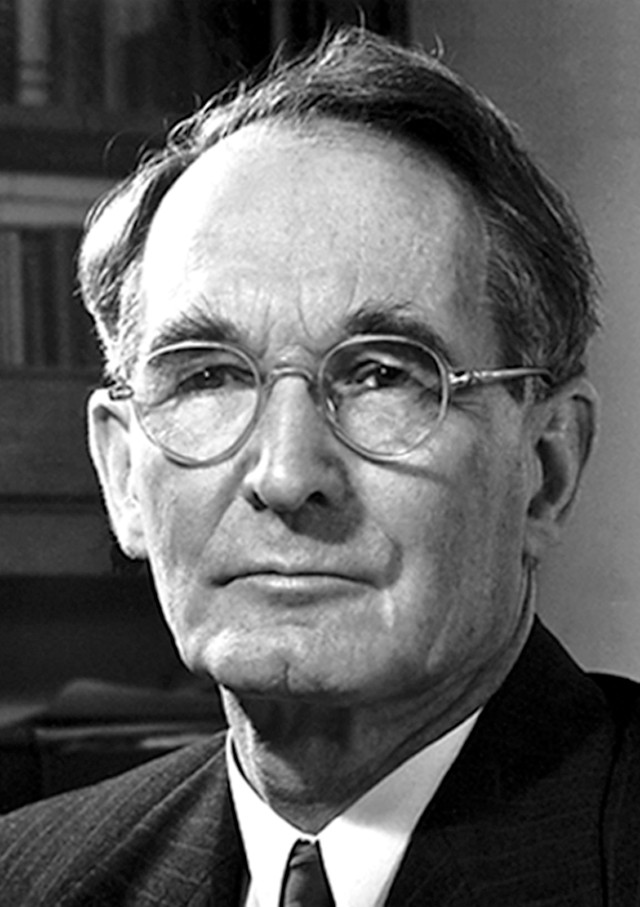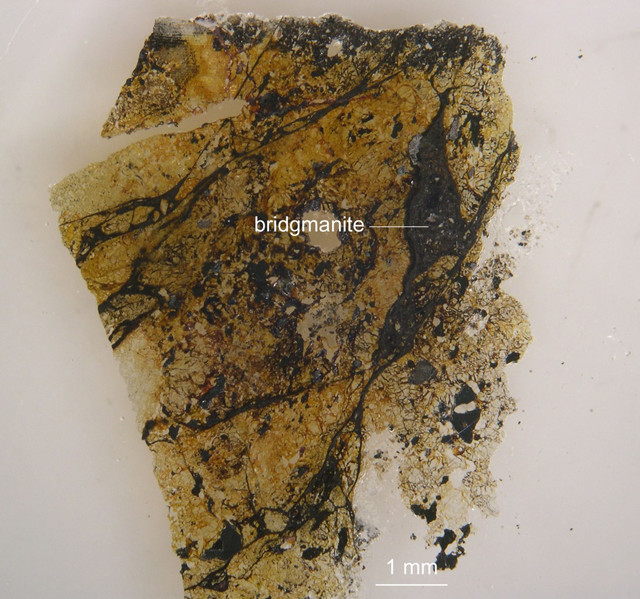
by Mary Caperton Morton Tuesday, May 12, 2015

The most abundant mineral on Earth, bridgmanite, has been named after Percy W. Bridgman, recipient of the 1946 Nobel Prize in Physics. Credit: Public domain.

Bridgmanite, earth's most abundant mineral. Credit: Chi Ma.
An elusive, high-density form of magnesium iron silicate, long known colloquially as “silicate perovskite,” now officially bears the name “bridgmanite,” after the father of high-pressure experiments, Nobel laureate Percy W. Bridgman.
Although ubiquitous in the deep Earth — bridgmanite makes up as much as 38 percent of the mantle — it is unstable and does not occur naturally at the low pressures on Earth’s surface. Thus, although synthetic samples had been produced in the lab, no one had been able to perform tests on a natural sample, which is a requirement for receiving an official name from the International Mineralogical Association (IMA).
Previous efforts had shown that the same mineral could be formed naturally in shocked meteorites, which experience high temperatures and pressures similar to those in Earth’s lower mantle. But attempts to study meteorites using transmission electron microscopy caused radiation damage to the samples, leading to inconclusive results.
Last November, however, Oliver Tschauner of the University of Nevada at Las Vegas and colleagues reported in Science on their successful recovery of minute samples of bridgmanite from inside a highly shocked L-chondrite meteorite that crashed in Australia in 1879. The team used a new approach involving nondestructive micro-focused X-rays to analyze the crystal structure and composition of the mineral, fulfilling the requirements of the IMA, which approved the new name in June 2014.
The natural specimen of bridgmanite differed substantially from synthetic samples, containing unexpectedly high amounts of ferric iron and sodium that give it a novel crystal structure, a finding that may improve our understanding of the deep mantle.
© 2008-2021. All rights reserved. Any copying, redistribution or retransmission of any of the contents of this service without the expressed written permission of the American Geosciences Institute is expressly prohibited. Click here for all copyright requests.